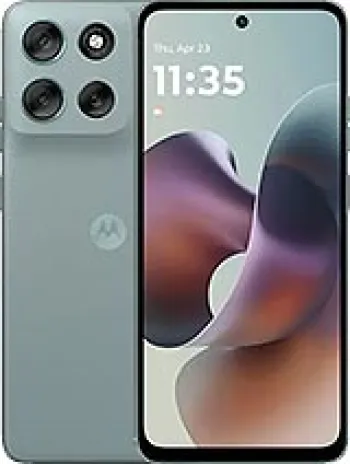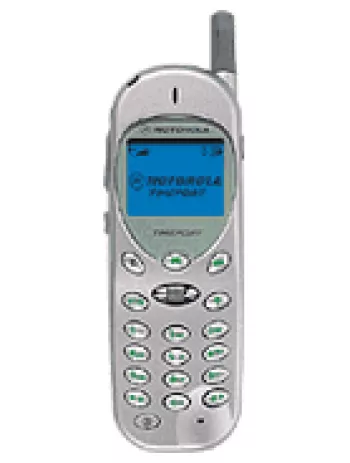
Introduction to Motorola EX300
The Motorola EX300 is a feature phone that was announced in September 2010 and later released in December of the same year. Despite being a basic phone by today's standards, it was designed to offer a decent set of features for its time. This article delves into the specifications and features of the Motorola EX300, a device that catered to users looking for a reliable and straightforward mobile experience.
Design and Build
The Motorola EX300 sports a compact and durable design with dimensions of 106 x 56.8 x 14 mm and a weight of 105 g. It features a minimalist design with a black color finish, accommodating a mini-SIM card. The phone's body construction ensures a comfortable grip, making it a portable and practical choice for everyday use. The resistive touchscreen offers a user-friendly interface, allowing for smooth navigation through its various functions.
Display
The device is equipped with a 2.8-inch TFT resistive touchscreen, supporting 256K colors, and a resolution of 240 x 320 pixels with a 4:3 ratio, resulting in approximately 143 ppi pixel density. While the display may not compare to modern smartphones, it provides adequate brightness and clarity for a device of its class, suitable for viewing messages, basic web browsing, and using applications.
Camera
On the photography front, the Motorola EX300 comes with a 3.15 MP main camera featuring autofocus. Although it does not support advanced photography features, it is capable of capturing basic images and recording videos. The absence of a front-facing selfie camera limits its use for taking self-portraits or video calls.
Performance and Hardware
The phone is powered by the QSC 6270 CPU, which, alongside its feature phone operating system, provides a satisfactory performance for basic tasks such as calling, texting, and running Java-based applications. With 90MB of internal storage, it offers limited space; however, the presence of a dedicated microSDHC slot allows for expandable storage, accommodating additional multimedia files and applications.
Connectivity
Motorola EX300 supports GSM/HSPA network technologies, with 2G bands on GSM 900/1800/1900 and 3G bands on HSDPA 900/2100. It allows for HSPA connectivity with speeds up to 3.6/0.384 Mbps. Connectivity options include Bluetooth 2.1 with A2DP support, miniUSB 2.0, and GPS with A-GPS for location services. However, it lacks Wi-Fi capability, limiting internet accessibility to mobile data.
Audio and Multimedia
The device includes a loudspeaker and a 3.5mm audio jack, providing conventional audio output for music and calls. It comes with a stereo FM radio, allowing users to listen to their favorite radio stations on the go. Java support enables users to play embedded and downloadable games, offering entertainment options alongside standard phone functionalities.
Battery Life
Battery performance is managed by a removable Li-Po 1150 mAh battery, providing up to 400 hours of standby time and up to 5 hours of talk time. This ensures that users can rely on the phone for extended periods without frequent recharges, a beneficial feature for those needing a device for fundamental communication purposes.
Additional Features
The Motorola EX300 supports SMS, MMS, and email messaging. Its web browsing capabilities are facilitated by an HTML-based browser, which, although basic, offers essential internet browsing functions. The phone also incorporates an accelerometer sensor, enhancing user experience through screen rotation functionality in supported applications.
Price and Availability
Upon its release, the Motorola EX300 was priced at approximately 140 EUR. However, being a discontinued model, its availability in the market is limited to second-hand purchasing options through online marketplaces and local sellers. This might be of interest to collectors or those seeking a nostalgic mobile device experience.
Conclusion
In summary, the Motorola EX300 was a modest feature phone offering essential features and performance indicative of its time. While it may not cater to modern smartphone enthusiasts, it represents a snapshot of mobile technology evolution, serving effectively for basic communication and entertainment needs. Its durability, coupled with basic connectivity options, makes it a reliable choice for users who prioritize simplicity and functionality in their mobile devices.
Key Features of Motorola EX300
- Supports 3G HSPA technology for faster internet connectivity
- Compact design with dimensions of 106 x 56.8 x 14 mm and weight of 105 g
- 2.8-inch TFT resistive touchscreen with 256K colors
- Expandable memory via microSDHC card slot
- 3.15 MP main camera with autofocus capabilities
- Includes stereo FM radio and 3.5mm audio jack
- Built-in GPS with A-GPS support for navigation
- Bluetooth 2.1 with A2DP for wireless connectivity
- Removable Li-Po 1150 mAh battery providing up to 400 hours stand-by time
- Equipped with accelerometer sensor
Disadvantages of Motorola EX300
- Resistive touchscreen that supports only 256K colors, which may not provide the best display quality.
- No front-facing selfie camera, limiting the ability to take self-portraits or make video calls.
- Limited internal memory of 90MB, which may require frequent use of a microSDHC card for additional storage.
- Lacks WLAN (Wi-Fi) capability, restricting internet access to mobile data only.
- Outdated Bluetooth version 2.1, which might lead to slower data transfer compared to newer versions.
- Screen size of 2.8 inches with a low resolution of 240 x 320 pixels, resulting in a lower screen-to-body ratio and pixel density.
- Relatively low-speed 3G connectivity with a maximum speed of HSPA 3.6/0.384 Mbps.
- Device is discontinued, which might affect availability of software updates and technical support.

View Also
More Phones
All Rights Reserved +14266 Phones © Mobilawy 2025

























